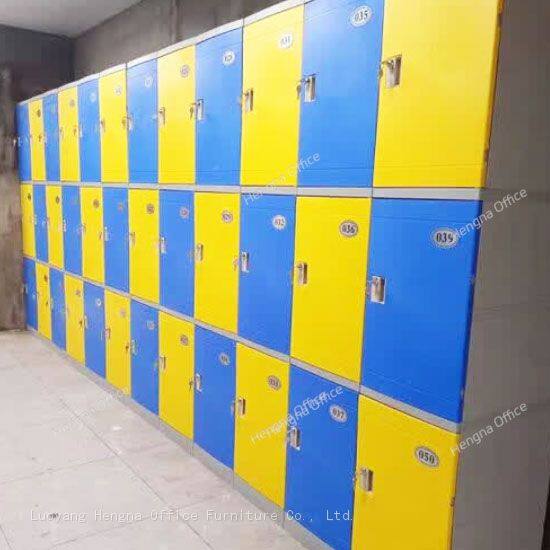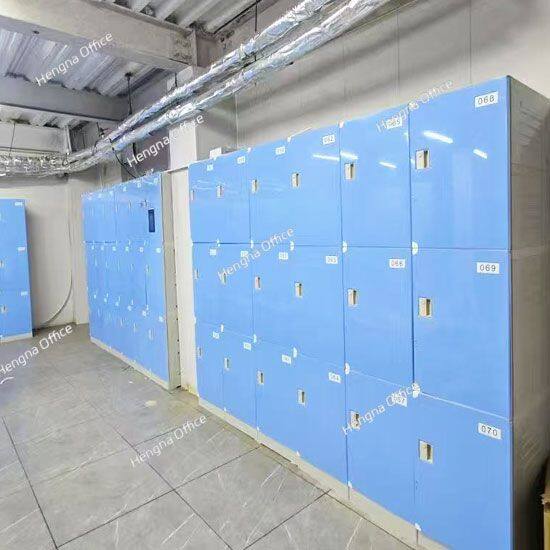Home > Blog > Complete Guide to Choosing the Best Moisture-Resistant Lockers for Swimming Pools: Long-Term Cost Sa
-
 Sarah
Hi there! Welcome to my shop. Let me know if you have any questions.
Sarah
Hi there! Welcome to my shop. Let me know if you have any questions.
Your message has exceeded the limit.

Complete Guide to Choosing the Best Moisture-Resistant Lockers for Swimming Pools: Long-Term Cost Sa
2025-10-21 17:28:57
When outfitting a swimming pool facility with lockers, many facility managers focus primarily on the initial purchase price. However, this approach often overlooks the significant long-term financial implications of locker selection. Moisture-resistant lockers, particularly those constructed from high-quality plastics, offer substantial cost savings and maintenance advantages over their lifecycle. This comprehensive guide will help facility managers make informed decisions by examining the true cost of ownership and the numerous benefits of investing in quality moisture-resistant lockers for swimming pool environments.
Understanding the Total Cost of Ownership
Before comparing specific locker options, it’s essential to understand the concept of Total Cost of Ownership (TCO):
Initial Purchase Price: The upfront cost of acquiring the lockers.
Installation Costs: Expenses associated with preparing the site and installing the lockers.
Maintenance Costs: Ongoing expenses for cleaning, repairs, and upkeep.
Replacement Costs: The expense of replacing lockers that reach the end of their service life.
Downtime Costs: Lost revenue or user dissatisfaction during maintenance or replacement periods.
The Financial Case for Moisture-Resistant Plastic Lockers

Long-Term Cost Savings Analysis
While the initial purchase price of quality plastic lockers may be higher than some metal alternatives, the long-term savings are substantial:
Extended Service Life: Quality plastic lockers typically last 15-20 years in pool environments, compared to 3-7 years for standard metal lockers.
Reduced Maintenance Costs: Plastic lockers require approximately 60% less maintenance than metal alternatives over their lifespan.
Elimination of Rust-Related Expenses: Metal lockers in pool environments require regular rust treatment, repainting, and eventual component replacement—expenses completely eliminated with plastic alternatives.
Maintenance Advantages of Plastic Lockers
The maintenance benefits of moisture-resistant plastic lockers extend beyond simple cost savings:
Reduced Labor Requirements
Cleaning Efficiency: Plastic lockers can be cleaned in approximately half the time required for metal lockers, as they don’t require special rust treatment or careful handling to avoid damaging protective coatings.
Simplified Inspection Process: Maintenance staff can quickly inspect plastic lockers for damage without the need to check for rust or corrosion.
Fewer Repair Calls: The durability of plastic lockers results in approximately 70% fewer repair requests compared to metal alternatives.
Lower Supply Costs
Cleaning Supplies: Plastic lockers can be cleaned with standard, inexpensive cleaning solutions, unlike metal lockers that may require specialized rust-inhibiting cleaners.
Repair Materials: When repairs are needed, plastic locker components are typically less expensive and easier to replace than metal counterparts.
No Protective Coatings: Metal lockers in pool environments require periodic application of protective coatings to prevent rust—an expense completely eliminated with plastic alternatives.
Key Features to Consider When Selecting Moisture-Resistant Lockers
Material Quality and Construction
Not all plastic lockers are created equal. When evaluating options, consider these material factors:
Material Type: High-Density Polyethylene (HDPE) offers superior moisture resistance compared to other plastic materials.
Wall Thickness: Quality plastic lockers typically feature wall thicknesses of 4-6mm for optimal durability.
Construction Method: Injection-molded lockers generally offer superior strength and consistency compared to assembled alternatives.
Design Features for Pool Environments
Specific design elements can significantly impact performance in swimming pool facilities:
Ventilation Systems
Proper ventilation is crucial in pool environments to prevent odor buildup and moisture accumulation:
Passive Ventilation: Look for lockers with strategically placed ventilation openings that allow air circulation while maintaining security.
Active Ventilation Options: Some premium plastic locker systems offer optional fan-assisted ventilation for particularly humid environments.
Drainage Capabilities

Water accumulation inside lockers can create problems even with moisture-resistant materials:
Perforated Shelves: Allow water to drain to the bottom of the locker.
Drainage Holes: Quality plastic lockers include drainage holes at the bottom to prevent water accumulation.
Sloped Design: Some advanced plastic lockers feature sloped bottoms that direct water toward drainage holes.
Security and Access Options
The locking mechanism is a critical component that affects both security and maintenance requirements:
| Locking Option | Maintenance Considerations | Security Level | User Convenience |
|---|---|---|---|
| Mechanical Combination Lock | Low maintenance, occasional mechanism lubrication | Medium | High (no keys to manage) |
| Key Lock | Medium maintenance, key replacement and cylinder issues | High | Medium (key management) |
| Electronic Lock | Higher maintenance, battery replacement, electronic issues | Very High | High (multiple access options) |
| Padlock Compatible | Very low maintenance | Variable (depends on padlock quality) | Medium (users provide locks) |
Implementation Best Practices
Site Preparation and Installation
Proper installation is crucial for maximizing the lifespan and performance of moisture-resistant lockers:
Adequate Drainage: Ensure the installation area has proper drainage to prevent water pooling around locker bases.
Ventilation Considerations: Install lockers in areas with adequate air circulation to minimize humidity exposure.
Secure Mounting: Even though plastic lockers are lighter than metal alternatives, they should be properly secured to prevent tipping.
Making the Decision: A Step-by-Step Guide
Step 1: Assess Your Facility’s Specific Needs
User Demographics: Who will be using the lockers?
Usage Patterns: How frequently will lockers be used?
Environmental Conditions: What specific moisture and chemical exposures exist?
Step 2: Evaluate Your Budget Constraints
Initial Budget: What funds are available for purchase and installation?
Maintenance Budget: What ongoing resources can be allocated to locker maintenance?
Replacement Cycle: How often can you afford to replace lockers?
Step 3: Research Available Options
Material Comparisons: Compare different plastic materials and construction methods.
Manufacturer Reputation: Research manufacturers’ track records in aquatic environments.
Warranty Coverage: Evaluate warranty terms and conditions.
Step 4: Calculate Total Cost of Ownership
Short-term Costs: Initial purchase and installation expenses.
Long-term Costs: Maintenance, repair, and replacement projections.
Intangible Benefits: User satisfaction, safety improvements, and aesthetic value.
Step 5: Make an Informed Decision
Prioritize Value Over Price: Consider long-term benefits rather than just initial cost.
Plan for the Future: Select a solution that can adapt to changing facility needs.
Implement Properly: Ensure proper installation and establish maintenance protocols.
Choosing the best moisture-resistant lockers for swimming pools requires looking beyond the initial purchase price to consider the total cost of ownership and long-term value. Quality plastic lockers offer substantial advantages in terms of durability, maintenance requirements, and lifecycle costs—making them the smart choice for facility managers focused on long-term value and operational efficiency.
By investing in high-quality moisture-resistant plastic lockers, swimming pool facilities can eliminate the ongoing maintenance headaches associated with traditional metal lockers while providing users with a safer, more reliable storage experience. The financial benefits, combined with improved user satisfaction and reduced operational disruptions, make plastic lockers the optimal choice for modern aquatic facilities.
When selecting lockers for your swimming pool facility, remember that the cheapest option today often becomes the most expensive choice tomorrow. By focusing on long-term value and selecting quality moisture-resistant plastic lockers, you’re making an investment that will pay dividends for years to come through reduced maintenance costs, enhanced safety, and improved user satisfaction.
Tags: Choosing the Best Moisture-Resistant Lockers, Moisture-Resistant Lockers for Swimming Pools, Complete Guide to Choosing the Best Moisture-Resistant Lockers

